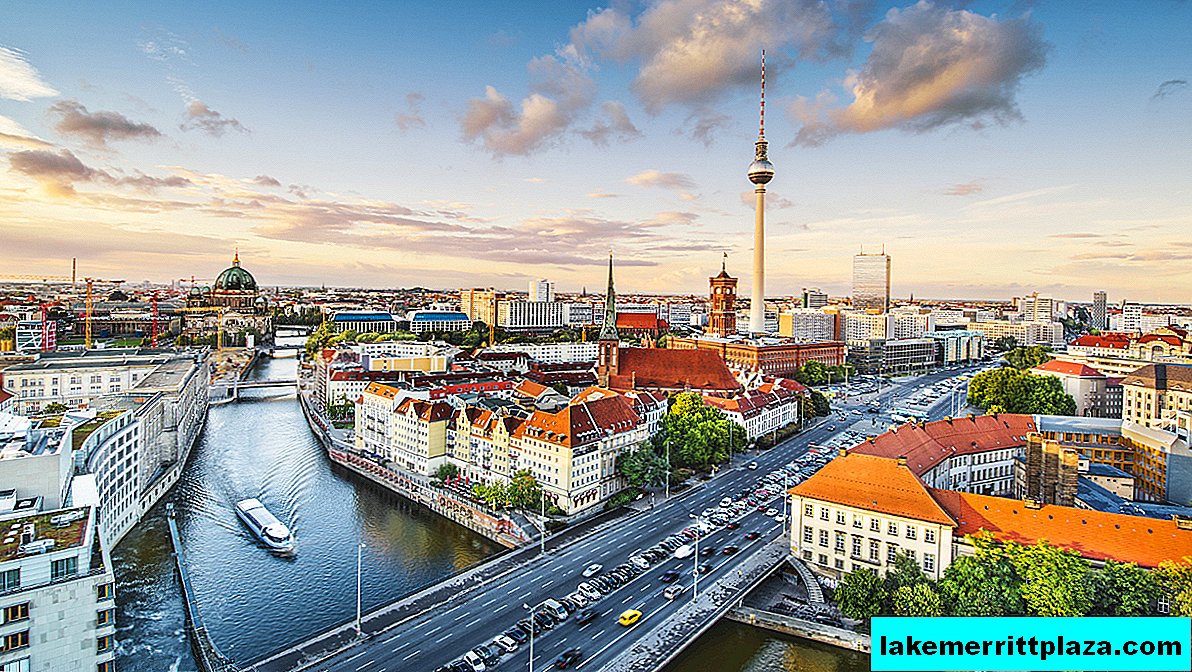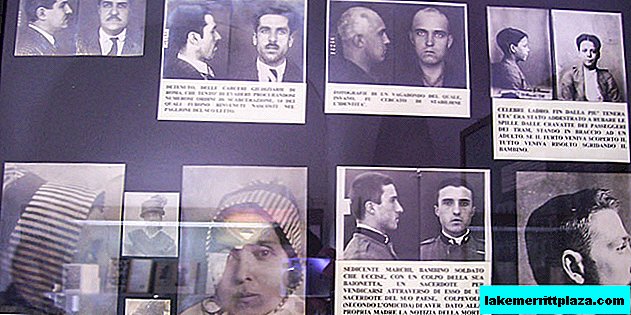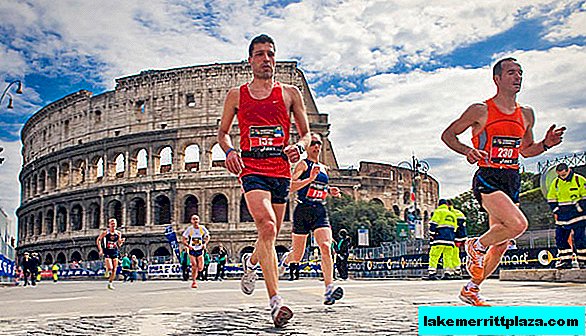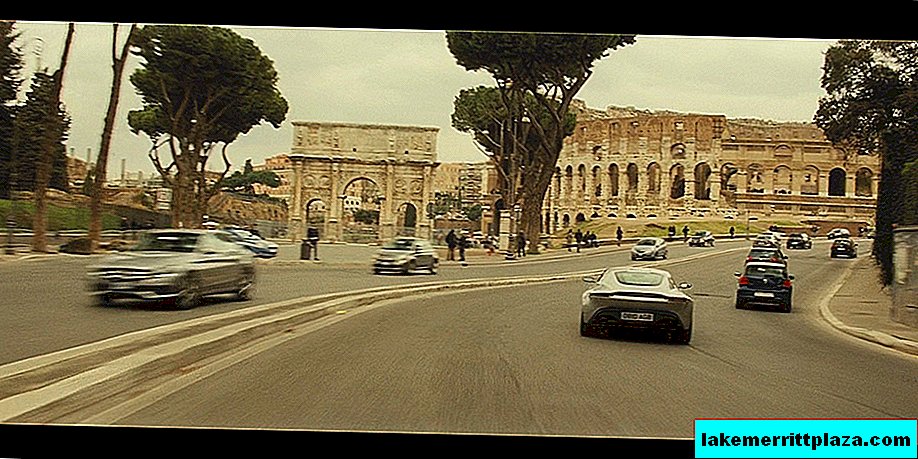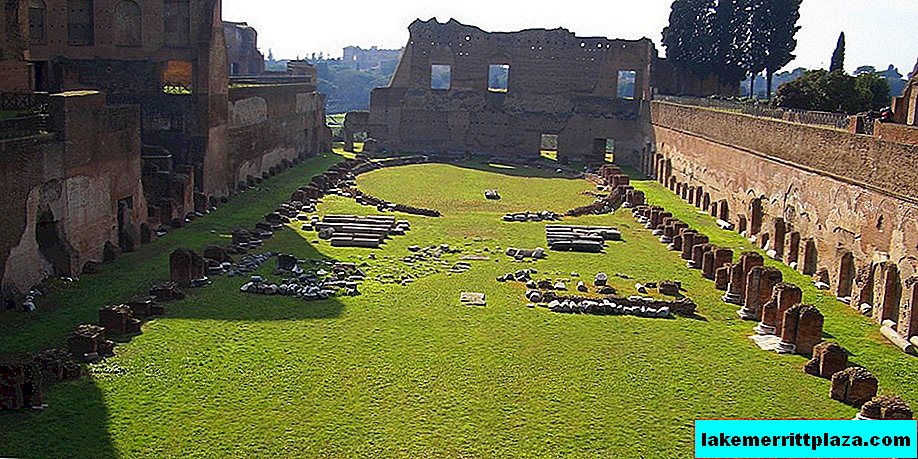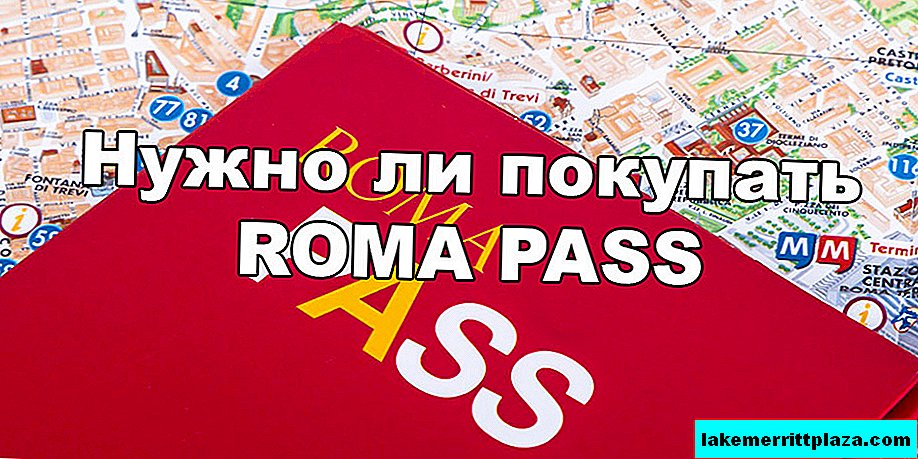The city of Ancona is located on the east coast of Italy. The current capital of the Marche region was founded in the 4th century BC; it is not surprising that the city is so rich in attractions that attract many tourists to Ancona. Since 1861, the province of Ancona has been part of the Kingdom of Italy.
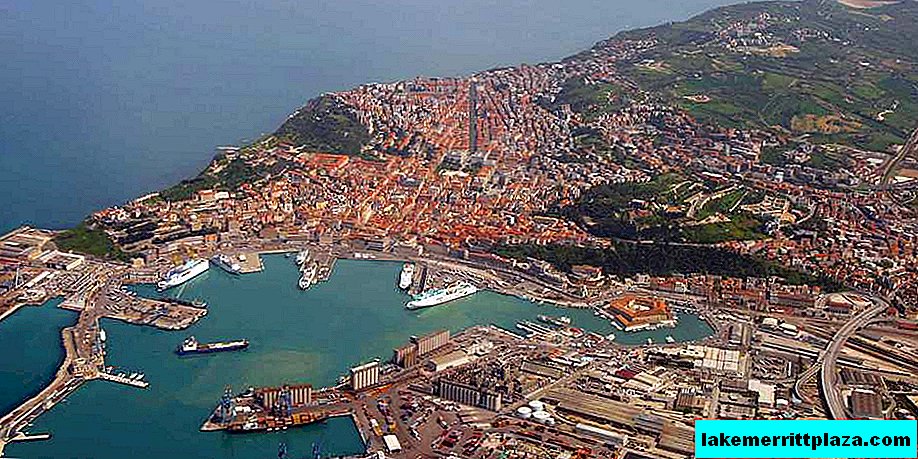
The port of Ancona is the largest in the Adriatic, from here you can quickly get to Greece, Slovenia, Croatia, Montenegro, etc. The city stands on a cape that protects the harbor. It is open from the north, so the streets in its old part are especially winding - so the residents tried to at least slightly soften the force of cold winds.
Nature

The landscape of Ancona is the hills and valleys that replace each other. Therefore, there are many opportunities for outdoor activities: horse riding, cycling, including mountain climbing, rock climbing, etc. In winter you can ski. In the vicinity of the city there are many hiking trails, there are several speleological routes.
Many of the city's sights are located high above the city, in the surrounding hills. In the north, at the highest point of the hill of Guasco (Colle Guasco), stands the cathedral, and over the hill of the Capuchins (Colle dei Cappuccini) towers the tower of the Ancona lighthouse. From the south, close to Ancona, the slopes of Santo Stefano, covered with lush vegetation, approach. Pincio Park is laid out here: it is pleasant to walk along its paths on a fine day, admiring the view of the city.
Beaches

Proximity to water opens up great opportunities for lovers of diving, sailing, fishing, etc. Long beaches are popular with citizens and tourists: there are shallow water, ideal for families with children, and mountainous areas, where there are quite large depths right on the shore - lovers of diving come here.
The beach of Palombina is about four kilometers long - one of the most beloved by the inhabitants of Ancona. Shallow depth, sandy beach - usually families with children come here, since you can get to the beach by any suburban bus going from the central station of the city.
Passetto beach is pebble, there is a beautiful blue sea, but it is quite difficult to enter it due to slippery and sometimes very sharp boulders. And getting to it is not so simple if you did not rent a car.
There are a couple of beaches remote from the city - it’s cleaner and not so crowded, but getting to them is more difficult. One of them is called Sassi Neri. Keep in mind: because of its solitude, the beach was chosen by nudists; if you feel uncomfortable surrounded by naked people, it is better to abandon the trip. Due Sorelle beach is probably the most picturesque of all Ancona beaches, but it is located 20 kilometers from the city, and you can get to it only by water, by ferry or private boat. Regularly included in the annual list of the best beaches in Italy.
It is important to remember that Ancona is not a seaside resort, and a local beach vacation has little to do with the way you like to spend time, for which it is customary to use this phrase. You can come here on a hot summer day, but you should not expect that you will spend a week here with pleasure, or even two.
Age of the Romans
Ancona emerged as a Greek city; it was founded by a tribe of Dorians who came here from Syracuse. A couple of centuries later - the exact date is unknown - the Roman fleet entered the harbor. A reminder of those times are two architectural monuments that have survived to this day.
Arch of Trajan

The symbol of Ancona, the Arch of Trajan (Arco di Traiano), bears the name of the emperor, who contributed to the heyday of the city. He expanded and strengthened the city port so that Roman ships could freely enter here. The arch is made of marble, its height is 14 meters, another 4 meters to the construction is added by a wide pedestal and a staircase leading to the arch. The building dates from 115 AD. There was an equestrian sculpture of Emperor Trajan on the arch, but it was stolen back in the 5th or 9th centuries.
Amphitheater

The amphitheater, preserved from the time of the stay in Ancona of the Romans (Anfiteatro romano) is a structure typical of many ancient Italian cities. In Ancona, he appeared at the turn of the millennium, at the end of the 1st century BC. The grandiose structure, accommodating up to 10 thousand spectators, is partially destroyed, but what is left allows you to make a complete impression of its size.
Cathedrals and churches
In Ancon there are many temple structures of different eras. These are the remains of ancient buildings, and churches of the Romanesque period, and more modern buildings, many of which are concentrated in the historical center of the city.
Cathedral

The predominant religious building of the city is the Cathedral of Saint Jude Kyriak (Cattedrale di San Ciriaco). Its common name is the Cathedral of Ancona (Duomo di Ancona).
The building was erected on the site of the Church of St. Lawrence, built by the early Christians, and even earlier, in ancient times, there was the sanctuary of Aphrodite. The cathedral is more than a thousand years old; it began to be built in the 10th century. It is difficult to determine the style - Romanesque, Byzantine and Gothic architecture are mixed here, which makes the building unique.
The portal in front of the cathedral and the lion sculptures guarding it are carved from pink marble, which is mined here in Ancona. The interior of the cathedral was repeatedly reconstructed. One of the interesting additions that appeared in 1739 is a marble altar with the image of the Mother of God. There is a legend that the face painted on the icon opened his eyes when Napoleon Bonaparte's troops invaded the country.
Church of Santa Maria della Piazza

The central square of the city, bearing the name of the Blessed Virgin Mary, gave the name of the church standing here. The construction of Santa Maria della Piazza (Chiesa di Santa Maria della Piazza) was carried out in the XI-XII centuries.
The building is a typical example of Romanesque architecture. Throughout its history, the church has changed its name more than once: first, Santa Maria del Canneto, that is, “the Mother of God in the thicket of reeds - at that time there were many swamps; then - Santa Maria del Mercato, that is,“ on the market square. ”And in IV -VI centuries the church of the early Christians stood here; the remaining mosaic masonry can be seen through the glass floor of St. Mary's Church. A small section of the city wall of the ancient Greek era has been preserved here. The church is not used for its intended purpose, concerts are held in it.
Church of Santa Maria di Portonovo

Another temple dedicated to the Virgin Mary is Santa Maria di Portonovo (Chiesa di Santa Maria di Portonovo). It was built at the very beginning of the XI century. The building stands on top of Mount Conero, and under it lies the sea and Portonovo Bay.
Church of Santi Pellegrino and Teresa
"Barefoot Church" - this is how the locals christened the church of Saints Pelegrin and Teresa (Chiesa dei Santi Pellegrino e Teresa) - younger than the first two. It was built in the XVIII century for the monastic order of the Carmelites, more precisely, a branch of the order, which appeared at the end of the XVI century. An ancient relic is stored here - a carved crucifix made of wood, which dates from the 13th century.
Historical buildings
In addition to the few historical monuments that have been preserved in Ancon since ancient times, the city has many no less interesting buildings from the point of view of architecture and history that deserve the attention of tourists.
Pia Gate Pia

Another triumphal arch of Ancona, Porta Pia, is much younger than Traian; It was built in the 1780s.
Then a new road was built, passing along the seashore; at the entrance to the city and put an arch, naming it in honor of Pope Pius VI. An interesting feature of the arch is its "two-facedness." Those who enter the city see a lavishly decorated baroque building. From the side of the city, this is a much more modest tuff construction, without any decorative elements.
Infirmary

The structure, which the townspeople call the "Lazaret" (Il Lazzaretto di Ancona), or the Mole Vanvitelliana (Mole Vanvitelliana), is located in the bay and, in fact, is a small island with a pentagonal building erected on it in the correct form.
It was built in the first half of the 1700s. Architect Luigi Vanvitelli designed the building at the request of Pope Clement XII. In times when terrible epidemics erupted, the Infirmary became the only defense of the city: travelers arriving in Ancona were quarantined here. Now the building is used as a cultural center.
Citadel

Ancona fortress (Cittadella di Ancona), or simply the Citadel, stands on the hill of Astagno in the southern part of the city.
It was built in the 16th century, during the Renaissance, by the architect Antonio da Sangalla. Below, at the foot of the hill, the sea approaches very close. The fortress is the highest point of Ancona. The pretext for its construction was to protect the city from raids by nomad Saracens; in fact, the initiator of the construction of Pope Clement VII thus tried to consolidate his power.
Kalamo Fountain

The oldest fountain in the city, Calamo (Fontana del Calamo), was built in 1560. There is evidence that the fountain was located here even under the Greeks, but was destroyed in 1503.
The fountain was restored according to a sketch made by the artist Pellegrino Tibaldi (Pellergrino Tibaldi); seven years later, he will become the chief architect of the Cathedral of Milan. The graceful fountain is part of the city wall, it is decorated with thirteen sculptural images of the faces of the fauns and satyrs, spewing water from their mouths. All but one of the masks are made of bronze; central - stone.
Ancona Lighthouse

The tower of the Ancona lighthouse (Faro di Ancona) stands on top of the Capuchin hill (colle dei Cappuccini).
It was built in 1860; the construction of the tower was attended by residents of the city. A new lighthouse has been operating since 1972, while the old one still attracts citizens and tourists: the observation deck of the lighthouse is located at an altitude of 105 meters above the sea and it offers spectacular views of the bay.
Palazzo
The palaces of Ancona are a special pride of the townspeople. Many of them repeatedly and severely suffered from earthquakes, fires, and in the recent past, and military bombing. The inhabitants of Ancona consider the preservation of their historical appearance to be a very important matter and have succeeded very much in it.
Senate Palace
The palace for meetings of the Council of Senators (Palazzo del Senato) appeared in Ancona in 1225; in ancient times, an ancient Roman forum was located in its place. During the Second World War, the building was badly damaged by bombing, only the facade remained from it. In the early 1950s, it was restored, restoring the historical appearance of the palazzo.
Palace of Elders

As the name suggests, The Council of the City Fathers met at the Palazzo degli Anzianiwho ruled the Republic of Ancona from the 12th to the 16th century. The building was erected in 1270, and in 1647 it was rebuilt, changing the facade.
Loggia of Merchants

The so-called Loggia of Merchants (Loggia dei Mercanti) was intended for meetings of merchants who came to Ancona in large numbers during its heyday.
Construction lasted more than 50 years, from the beginning of the 1390s to 1443. The decoration of the facade of the building was done by Croatian architect Giorgio da Sebenico (Giorgio da Sebenico), he became widely known under the name Juraj Dalmatinac (Juraj Dalmatinac). In 1556, a fire broke out in the palace, and it had to be restored; for this, the city fathers invited Pellegrino Tibaldi.
Palazzo ferretti

The beautiful building was built in the 16th century for the Ferretti family, it bears a generic name: Palazzo Ferretti.
The palace was designed by architect Antonio da Sangallo the Younger. Many famous artists of that time worked on the interiors of the palace: Pellegrino Tibaldi, Federico Zuccari, Luigi Vanvitelli. In 1958, the archaeological museum of the Marche province was opened in the halls of the palace (Museo archeologico nazionale delle Marche).
How to get there
Due to the location of Ancona, you can get to it by almost any means of transport, by air, land or water. The proximity of the city to other ports of the Adriatic coast makes it possible to short-term visit if you are resting, for example, in Greece or Croatia.
Ferry

From Ancona to Croatian Split in a straight line - about 300 kilometers. Travel time on a BlueLine ferry is 11 hours. A lot, but traveling on water is already an adventure. In the same way, you can get to the city from Bar (Montenegro) and the similarly named Bari (Italian Puglia), as well as the ports of Greece and Turkey. The longest sea passage is from the Greek city of Patras, it will take almost a day. Ticket price - from 60 euros.
Car
In the presence of a rented car, any point on the map becomes available. Ancona is no exception. The Adriatica motorway passes by it, connecting Bologna and Taranto, a city in the south of the country, at the point where the heel of the Italian boot is “attached” to its sole.
A train
The railway network connects Ancona with large cities (Rome, Milan) and the main tourist centers of Italy (Florence, Venice, Bologna, etc.). The train is perhaps the most convenient and economical way to travel around the country. You can drive from Rimini in an hour, from Rome in 3-4 hours. Train timetables are available at www.trenitalia.com.
Bus
Cheaper than a train - just a bus. This method of transportation between cities and countries cannot be called comfortable and fast, but sometimes the price factor is decisive. The list of Italian cities from which buses run regularly to Ancona is extensive.
- See the schedule and ticket prices at www.flixbus.com
If necessary, you can get here from Poland, Switzerland and Austria, there are many bus routes from Ukraine. The road from Kiev to Ancona takes 35 hours.
Aircraft
There are no direct regular flights to Ancona from Russia - Ancona is located away from traditional tourist routes. Aeroflot, Alitalia, Lufthansa flights arrive at Ancona Falconara airport via Rome, Munich and other European cities. Some low-cost airlines (Ryanair and others) in the summer, when passenger volumes increase, organize seasonal flights from Italian cities.

